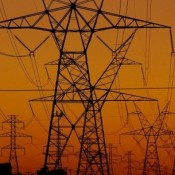Energy pundits frequently warn that wind and solar power intermittency undermine grid reliability; and they advocate either backing up fickle renewables with fossil fuel power plants, usually nat-gas peaker plants, or bulking up with newly developed grid-scale storage. Armed with persuasive computer modeling (I'm a sucker for even cut rate CGI), Amory Lovins, the founder of the Rocky Mountain Institute, is in high-contrarian mode as he explains why he thinks that's a myth.

Instead, Lovins advocates a grid-based, software solution, or what he calls a "choreography" between supply and demand, using predictive computer models to anticipate production and consumption and then slow-dancing the two by intelligently routing power where it's needed. He's probably been following "virtual power plant" demonstrations in Germany, where researchers use software to combine a wide array of distributed energy sources into a single, dispatchable power plant.
He also dresses up his supply and demand two-step with a soup?on of energy efficiency to make his case that the US can easily meet its energy needs without storage -- and without missteps like rolling brown-outs or a total crash. So while he doesn't think investments in massive amounts of grid storage are necessary, obviously, he's assuming that someone's going to rebuild the country's aging, "dumb" grid. That's where he's putting his money to work.
Actually his cyberized energy paradigm is "storage-lite," tossing in thermal ice-storage, which has already shaved demand by about 30 percent for energy intensive buildings, and smart charging from aggregated fleets of electric vehicles. But, ultimately, even with that extra storage, Lovins thinks that adding massive amounts of storage just steps on the toes of renewables.


